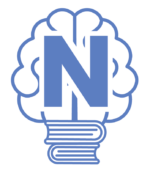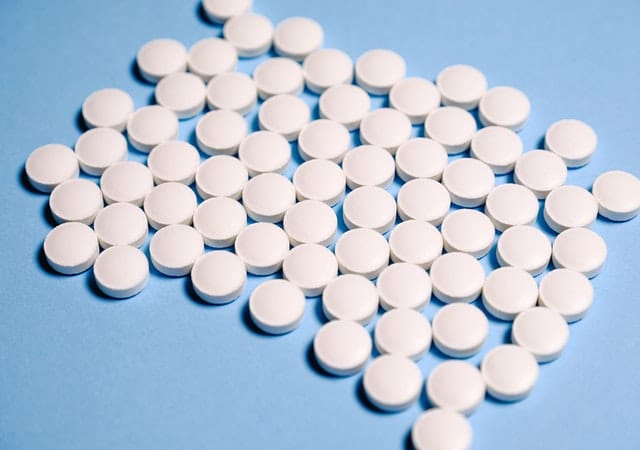Attention Deficit Hyperactivity Disorder (ADHD) causes trouble focusing, impulsivity, excessive energy, and hyperactive behavior.
The standard treatment for ADHD is a prescription stimulant—usually either an amphetamine (Adderall or Vyvanse) or methylphenidate (Ritalin or Concerta). But while stimulants work well for alleviating symptoms, they can also come with side effects, especially in children.
Here’s a look at how stimulants improve symptoms of ADHD, as well as alternative options to improve attention and calm down brain activity without prescription drugs.
How ADHD Changes Your Brain
ADHD is a neurodevelopmental disorder, which means it usually starts when your brain is still developing. ADHD usually starts in people under 25 years old, especially children. Somewhere between 5-7% of young people have ADHD.[1]https://pubmed.ncbi.nlm.nih.gov/29033005/
Symptoms of ADHD include:
- Difficulty with attention
- Hyperactivity
- Impulsivity
- Excessive energy
- Decreased emotional control
Looking at the above symptoms, you may think that ADHD would come from excessive activity in your brain. It seems like a hyperactive brain would cause hyperactive behavior.
But it turns out the opposite is true. ADHD actually happens when your brain is underactive— specifically your prefrontal cortex (PFC), the part of your brain right behind your forehead.
The PFC is what separates you from apes. It was the last part of the human brain to evolve, and it’s what gives you decision-making, planning, impulse control, and a sense of self.
A lot of your PFC’s job is inhibition. For example, if you’re on a diet and you see a cookie on the kitchen counter, your PFC will turn on, keeping your impulse under control and reminding you that you’re on a diet and should plan ahead.
Your PFC also helps with focus—it lights up when you might be distracted, keeping you on task—as well as organization and planning.
But with ADHD, your prefrontal cortex doesn’t light up when it’s supposed to. The result is that it’s hard to block out distractions and keep your impulses under control—which explains hyperactivity, trouble planning, trouble focusing, and the other main symptoms of ADHD.
Stimulants Turn on Your Prefrontal Cortex to Help with ADHD
Because hyperactivity and other symptoms of ADHD come from an underactive prefrontal cortex, doing something that ramps up PFC activity is the best way to restore balance to your system.
That’s why doctors usually treat ADHD with prescription stimulants, like amphetamines (Adderall or Vyvanse) or methylphenidate (Ritalin or Concerta).
These stimulants increase dopamine and norepinephrine, two brain chemicals that control motivation and focus.[2]https://www.ncbi.nlm.nih.gov/pmc/articles/PMC8063758/ They power up your PFC and bring your brain back into a balanced state.

Side Effects of Taking Prescription Stimulants for ADHD
Stimulants work well for ADHD symptoms, but they can also come with serious side effects. They’re especially concerning because, in most cases, doctors prescribe potent stimulants to children whose brains are still developing— and in the last few years, researchers have raised concerns about how taking amphetamines from a young age changes a child’s long-term brain health.
If you are on medication and would rather not take it anymore, discuss the process of getting off of medication with your prescribing doctor. You could experience serious effects from stopping abruptly or tapering on your own.
Addiction and Withdrawal
The stimulants that treat ADHD are highly addictive. D-amphetamine (Adderall or Vyvanse) is the most abused prescription drug in the United States, and the risk of addiction is higher in people who have had it prescribed for ADHD.[3]https://www.ncbi.nlm.nih.gov/pmc/articles/PMC2670101/
Amphetamine and methylphenidate (Ritalin or Concerta) both cause intense withdrawal symptoms, which makes it hard to quit once you’ve started using them.
In addition, other research reviews have found that teens and adults who start taking stimulants for ADHD are more likely to develop drug addiction in general.[4]https://www.ncbi.nlm.nih.gov/pmc/articles/PMC3666194/[5]https://www.ncbi.nlm.nih.gov/pmc/articles/PMC2670101/
Altered Brain Development
Long-term research shows that children who take prescription stimulants from a young age are at higher risk of mania, psychosis, and trouble with impulse control/[6]https://pubmed.ncbi.nlm.nih.gov/11322742/[7]https://pubmed.ncbi.nlm.nih.gov/15860370/
Brain imaging studies have found that using amphetamine long-term can change the structure of your brain’s reward pathway, and the authors hypothesized that these structural changes could contribute to an increased risk of addiction and psychosis.[8]https://pubmed.ncbi.nlm.nih.gov/9334421/
Slowed Growth
Prescription stimulants can also change the way your body develops. Pre-pubescent children who start taking stimulants for ADHD have slower growth.[9]https://www.ncbi.nlm.nih.gov/pmc/articles/PMC2670101/
In fact, some doctors recommend that patients with ADHD take long-term breaks from their stimulant medications, both to minimize their effect on growth (in children) and to reduce the risk of addiction (in both children and adults).[10]https://www.sciencedirect.com/science/article/abs/pii/S0924977X11000678?via%3Dihub[11]https://www.researchgate.net/publication/266151922_Drug_Holidays_From_ADHD_Medication_International_Experience_Over_the_Past_Four_Decades However, because these stimulants are so addictive and cause withdrawal, cycling on and off them can be difficult.
3 Alternatives to Prescription Stimulants for ADHD
If you’re concerned about the side effects of prescription stimulants, there are other ways to improve your focus and reduce hyperactivity.
Nootropics
Nootropics are compounds that support strong brain function and enhance cognition. You can take nootropics for better memory, improved focus or attention, increased resilience to stress, and more.[12]https://pubmed.ncbi.nlm.nih.gov/23042218/

A 2012 study found that nootropics may support attention, focus, long-term planning, problem-solving, and emotional control.[13]https://www.ncbi.nlm.nih.gov/pmc/articles/PMC3353150/
A 2016 study found similar results and noted that nootropics are a promising way to improve attention and reduce hyperactivity without the risk of addiction or serious side effects.[14]https://www.ncbi.nlm.nih.gov/pmc/articles/PMC4968082/
Nootropics are typically taken as stacks— combinations of cognitive enhancers, nutraceuticals, vitamins, and minerals that provide full-brain support for a specific benefit (memory, focus, etc.). The right stack depends on your unique brain and what you want to improve.
A nootropic quiz can help you figure out which compounds will work best for you, based on your brain and goals.
Cardio Exercise
Working out is one of the best-established ways to relieve symptoms of ADHD, especially when it comes to boosting attention and reducing hyperactivity.
A recent review of more than 30 studies found that aerobic exercise like running, swimming, or cycling is the best way to reduce ADHD symptoms and that, in some cases, consistent cardio was as effective as taking prescription medication.[15]https://pubmed.ncbi.nlm.nih.gov/28917364/
Another large-scale review found that adults with ADHD see a similar improvement from aerobic exercise. However, other types of working out, like lifting weights, aren’t as good for improving attention and hyperactivity— so if you’re going to try exercise for ADHD, some kind of cardio is your best bet.[16]https://www.ncbi.nlm.nih.gov/pmc/articles/PMC5281644/
Meditation
Meditation is another way to improve symptoms of ADHD without drugs.
A 2015 study found that people with ADHD who meditated for eight weeks saw significant improvements in sustained attention and mood. They also reported a higher overall quality of life.[17]https://pubmed.ncbi.nlm.nih.gov/26137496/
Another study found that meditation improves people’s ability to ignore distractions and suppress task-unrelated thoughts. The authors concluded that it was a promising way to manage ADHD symptoms.[18]https://www.ncbi.nlm.nih.gov/pmc/articles/PMC4694553/
However, other researchers suggest that some meditation research is biased and that meditation alone may not be enough to relieve ADHD symptoms.[19]https://pubmed.ncbi.nlm.nih.gov/31093302/
Final Thoughts
Prescription stimulants work well for managing symptoms of ADHD, but they come with risks and side effects that may not be worth it for some people.
If you want to improve your focus and attention without prescription drugs, the above alternatives may help. Give them a try and see what works best for you.

References

